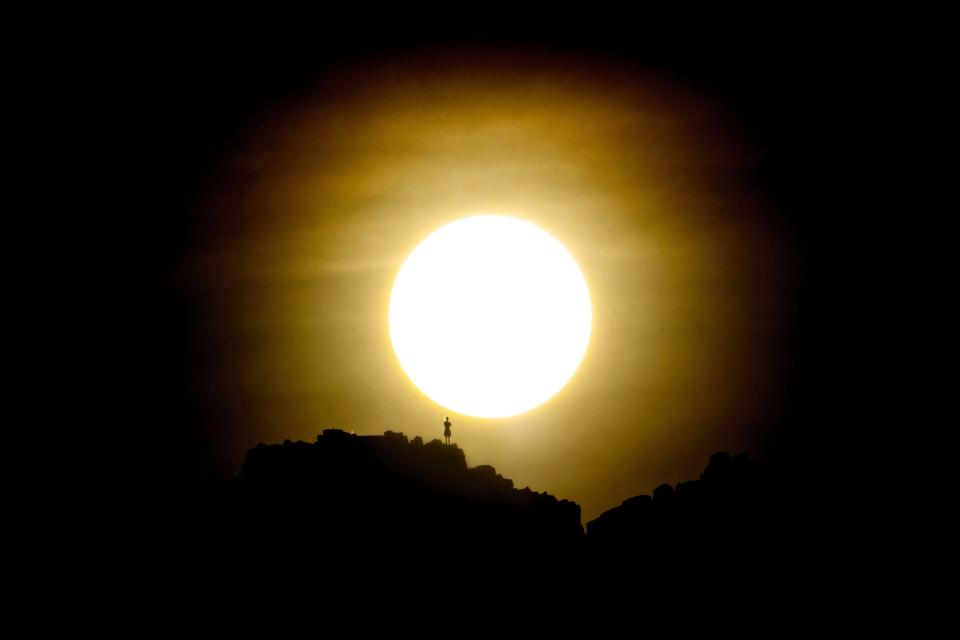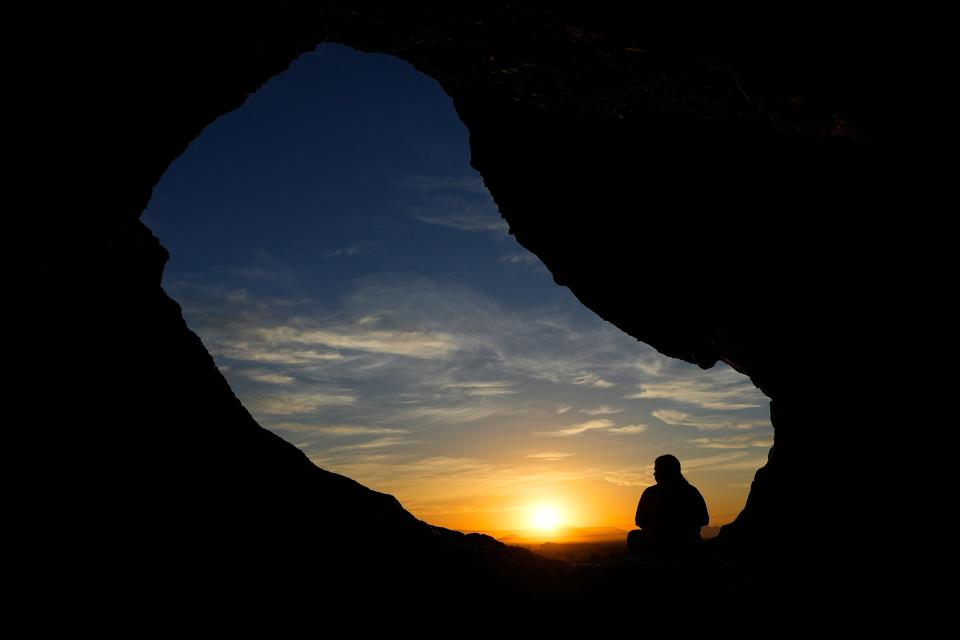When is sunrise in Arizona? Plus, the scientific reason our sunsets are the most beautiful
Are you an early riser? Do you wake up at the crack of dawn just to catch a glimpse of the sun rising above the mountains in Arizona?
Or maybe you’re more of a sunset person, preferring to watch as the sun sinks below the saguaro.
Regardless of your preference for day or night, Arizona is the ideal state to catch an early sunrise or beautiful sunset.
Arizona is on Mountain Standard Time (MST) and the state does not observe daylight saving time (DST), which means that half of the year Arizona time is the same as states on Pacific Standard Time (PST).
National Weather Service meteorologist Matt Salerno explained that in the summertime, you can see the effect not following DST has on the timing of the sunrise.
In the Navajo Nation Reservation in northeast Arizona, where DST is observed, sunrise in August is around 6:30-6:40 a.m., whereas in the nearby Arizona city of Flagstaff, sunrise is around 5:30-5:40 a.m.
In metro Phoenix, sunrise is around 5:45 a.m. to 6:15 a.m. in August and September.

What day is the earliest sunrise?
In 2023, the earliest sunrise in Phoenix fell on June 18. On that day, the sun rose at 5:18 a.m., Salerno said.
Is sunrise earlier in winter or summer?
During the summertime, the sun’s track of orbit is longer from horizon to horizon. Meaning that sunrises are earlier, and sunsets are later than in the winter, according to the U.S. Naval Observatory Astronomical Applications Department.
Salerno said the sunrise gets earlier in the summertime because Earth’s axis is tilted towards the sun, which leads to longer daylight hours in the Northern hemisphere.
According to the timeanddate.com, Phoenix will likely have its latest sunrise sometime in January 2024, around 7:33 a.m.

How long before sunrise does light appear?
Twilight is the time just before sunrise and just after sunset when the sky is partially lit up by the sun. It is not completely dark or light, according to the National Weather Service.
There are three different stages of twilight. Oftentimes, dawn can be used to describe daybreak. Although there is no specific time frame, dawn can start about 26 to 27 minutes before sunrise.
In the summer, dawn falls around 5 a.m. in Arizona.
What is the longest day in Arizona?
The longest day in Arizona occurred on June 21 during the summer solstice. At this time, Phoenix had a 14-hour 22-minute day with sunrise at 5:18 a.m. and sunset at 7:41 p.m.
Fall countdown: A break from the heat: When does summer officially end?
What time is golden hour in Arizona?
Golden hour refers to the period of time when the sunlight appears warmer and softer. It is an ideal time for photographers and filmmakers to get naturally well-lit shots.
It occurs in the last hour before sunset and the first hour after sunrise.
In August and September, it is usually around 5:30-6:30 a.m. and 6:30-7:30 p.m.
Why are Arizona sunsets so pretty?
Salerno said our beautiful sunsets have to do with the wide-open skies in Arizona. In Phoenix in particular, it's also thanks to being in a valley. High clouds and the contrast of desert and mountain landscapes makes for a dramatic scene.
He said that the state also experiences purple mountain majesty, which is when the mountains turn a purple color around sunset as the light is reflected.
According to the Arizona State Parks and Trails, the answer is also a scientific one that has to do with the ecosystem and landscape. Specifically, our desert environment lends itself to the scattering of small dust particles and molecules in the atmosphere, which change the direction of light rays as the sun rises and sets.
“The color of the scattered light is determined by the size of molecule or particle and the actual wavelength of light,” according to the Arizona State Parks and Trails. “Because Arizona is generally dry, dust particles are able to float effortlessly on the breeze so there’s a lot of them available for scattering. More particles equal more color.”
Don't worry about changing those clocks: When does daylight saving time end? Everything Arizonans need to know about 'falling back'
Reach the reporter at dina.kaur@arizonarepublic.com. Follow @dina_kaur on X, formerly known as Twitter.
Support local journalism. Subscribe to azcentral.com today.
This article originally appeared on Arizona Republic: When is sunrise in Arizona? What to know about golden hour and more

